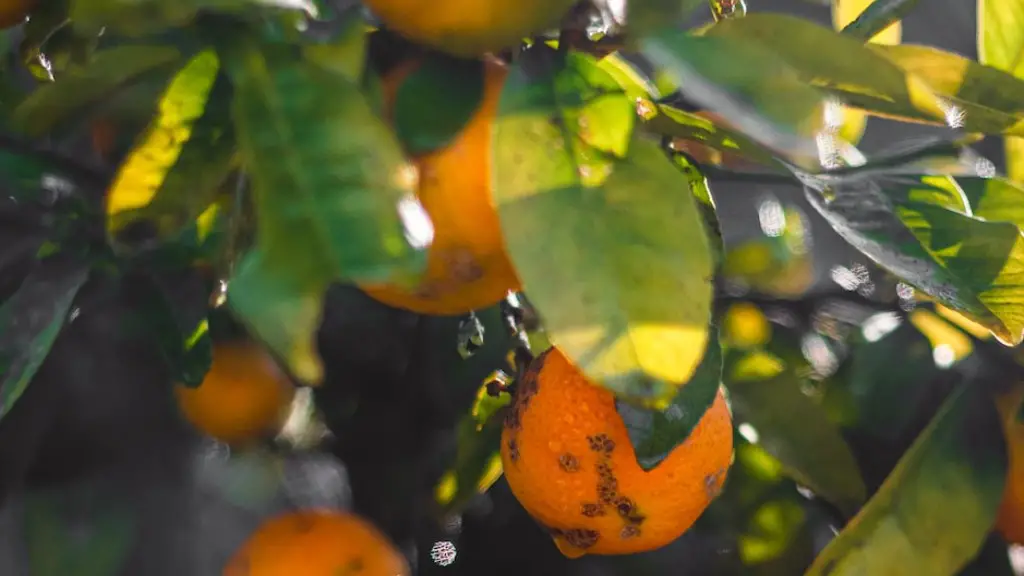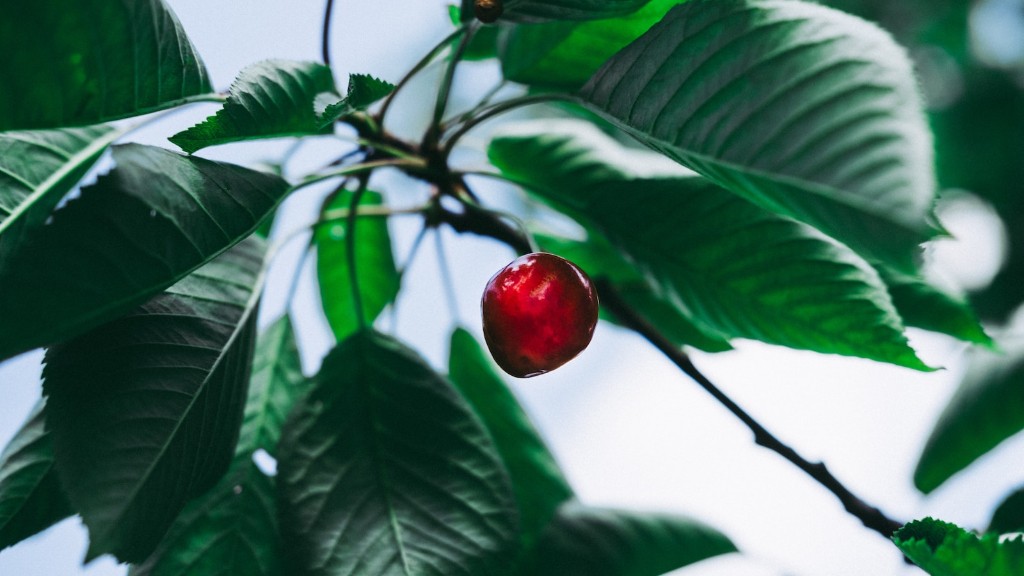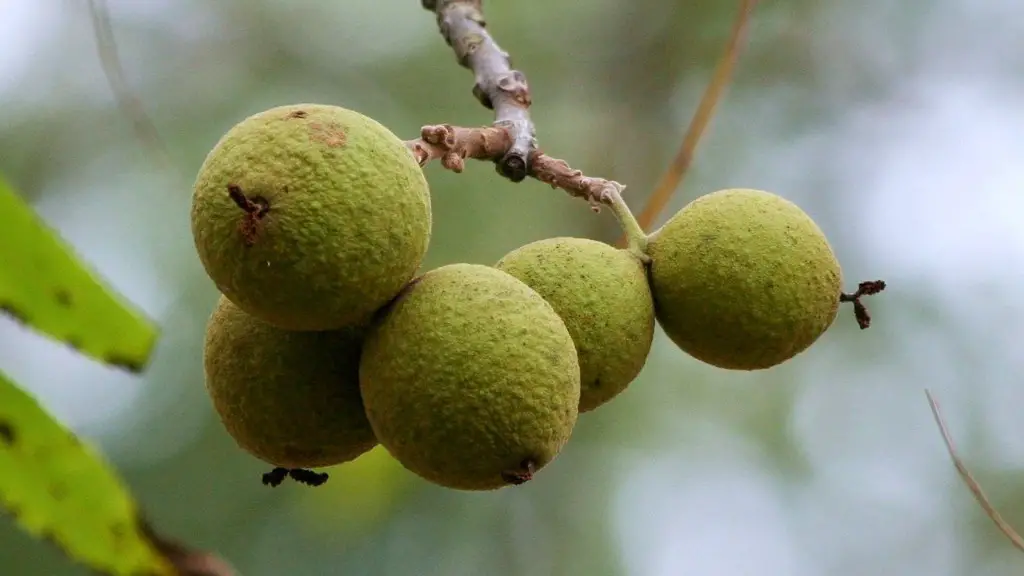Lemon trees are one of the most popular citrus trees grown in home gardens. They are relatively easy to care for, and produce an abundance of fruit. Lemon trees are evergreen, meaning they have leaves year-round. They can grow to be 20-30 feet tall, but are often kept smaller through pruning. The leaves are dark green and glossy, and the flowers are white with a yellow center. Lemons ripen to a yellow color, and are picked when they are still slightly green.
A lemon tree looks like a tall, evergreen tree with narrow, glossy green leaves and small, white flowers. The lemon fruit is a small, yellow oval.
How do I know if I have a lemon tree?
The most apparent visual feature to differentiate between lemon and lime is the shape of their leaves. Lemon leaves are typically longer and oval-shaped, kind of how lemon fruits are more elliptical than limes. Leaves from lemon trees can grow up to about 5 inches, while lime leaves barely reach 2 inches.
Lemons are a popular fruit that are used in many different dishes and drinks. They are also used for their natural cleaning properties. When grown outdoors in warm climates, regular lemon trees can grow up to 20 feet tall and take up to six years to bear fruit. In cooler climates, they may only grow to 10 feet tall and take four years to bear fruit.
Where do lemon trees grow best
Lemon trees are best suited for growth in tropical regions; however, they can be potted and kept indoors in locations that experience temperatures below 50 degrees, so long as the tree is placed in an area with ample light. Sunrooms and windowsills are ideal indoor locations for a lemon tree.
Lemon leaves are a great addition to any dish, as they add a splash of color and a zesty flavor. They can be used fresh or dried, and are especially nice in salads, soup, or seafood dishes. To dry lemon leaves, simply lay them out on a flat surface and allow them to air dry.
What are three common problems that lemon trees can have?
Lemon trees are susceptible to a number of problems, including citrus canker, sooty mold, botrytis blight, anthracnose, and lemon scab. Lesions on leaves are the first sign of citrus canker, and these can eventually lead to black moldy spots. Sooty mold is often caused by aphids and can be controlled by spraying the tree with water. Botrytis blight can cause fuzzy gray mold and brown spots on leaves, and the best way to control it is to remove affected leaves and destroy them. Anthracnose can cause tan spots with dark outlines on leaves, and the best way to control it is to remove affected leaves and destroy them. Lemon scab can cause brown scabs on the fruit, and the best way to control it is to pick the fruit as soon as it is ripe and wash it thoroughly.
Lemon Trees are a great low-maintenance plant and can grow perfectly even within your house! As a citrus variety, lemon trees require full sun, which means about 6 to 8 hours of direct sunlight daily For indoor growth, simply place them in front of a south-facing or sunny window.
What month do lemon trees bloom?
Meyer Lemon Trees are beautiful and fragrant, and they can bloom all year. However, they have two main blooming times: fall and early spring. If they bloom while it’s too cold for them to be outside, simply keep your tree indoors.
Lemon trees are known to benefit from the presence of nitrogen and calcium, both of which are found in coffee grounds. Additionally, the organic matter in coffee grounds can help improve soil tilth. It is important to note that coffee grounds should only be used after they have been fully decomposed in a compost pile.
Do lemon trees grow well in pots
Lemon trees are a great addition to any home, and they can be easily grown indoors in a pot. If you experience cooler weather during the fall and winter months, growing a potted lemon tree indoors is a great way to sustain the plant all year long. Since these trees are self-pollinating, only one is needed to produce fruit.
Citrus trees love sunlight and warmth, so a south-facing bed is best. A spot next to your house or garage can provide added protection and warmth, but don’t get too close: your citrus plant will need a good 6-8 feet of space between it and a structure or driveway, sidewalk, sewer lines or septic system.
How big do lemon trees grow in pots?
Citrus trees can grow quite tall, even in a container. Dwarf varieties and regular pruning can help keep them more manageable, but they can still reach 6 feet or more. Keep this in mind when choosing a location for your tree.
If you’re looking to plant lemon seeds from a store-bought lemon, it’s definitely possible. Keep in mind, however, that not all store-bought lemons will have seeds, or viable seeds. To increase your chances of success, choose lemons that are organic and from a reputable source. With a little patience and care, you can enjoy homegrown lemons in no time!
Do lemon plants lose their leaves in winter
Citrus trees are not deciduous. This means that they do not lose their leaves in the fall and winter like other trees. Instead, they keep their leaves year-round.
To ensure that your citrus trees thrive during the winter months, it is important to lower the room temperature to between 58-68 degrees. Additionally, consider providing supplemental lighting and rotating the plant on a regular basis. Fertilize monthly and water properly. Finally, watch for pests and be sure to improve air circulation.
Do lemon trees smell?
When trying to identify a lemon tree versus a lime tree, one way to tell them apart is by smelling the leaves. The lemon tree’s leaves will have a strong lemon odor, while the lime leaves will smell like lime. Additionally, the rind of the fruit from a lemon tree will smell like lemons, while limes will display a strong lime scent. To test this, carefully score the rind of the fruit and then smell it.
If your lemon tree leaves are turning yellow, it is most likely due to magnesium deficiency. Mixing 30g of Epsom Salts per litre of water (approximately 2 tablespoons) will help correct this deficiency.
When should you not water a lemon tree
Watering the lemon tree is essential to keeping the plant healthy. Newly potted plants should be watered well every alternate day, ensuring that the root ball gets hydrated. Once the plant is established, watering can be reduced to twice a week, and then eventually to once a week.
A tree with yellow or cupped leaves, or leaves that don’t look perky AFTER watering can indicate excessive watering and soggy roots. Give your tree water less often. Citrus prefer infrequent, deep watering to frequent, shallow sprinklings.
Conclusion
The lemon tree is a small to medium-sized evergreen tree with a strong, fresh citrus smell. The bark is smooth and the leaves are glossy green. The lemon fruit is oval in shape and has a yellow or greenish-yellow skin.
In conclusion, a lemon tree looks like a citrus tree with fruits that resemble lemons. Thetree has glossy, dark green leaves and the branches are covered with thorns. The lemon tree cangrow to be quite tall, up to 20 feet, and it produces a white flowers with a strong lemon scent.




